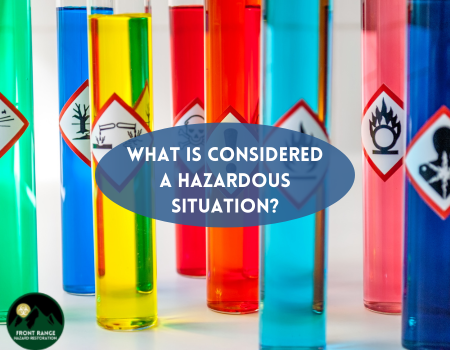In our daily lives, encountering situations that pose potential risks to our well-being is not uncommon. Understanding what constitutes a hazardous situation is crucial for taking proactive measures to prevent accidents and injuries. This article aims to shed light on the concept of hazardous situations, offering insights into their characteristics and providing guidance on how to recognize and respond to potential safety risks.
Defining a Hazardous Situation:
 A hazardous situation refers to any circumstance or condition that has the potential to cause harm, damage, or injury to individuals, property, or the environment. These situations can arise in various settings, from the workplace to our homes and public spaces. Recognizing and addressing hazardous situations is essential for maintaining a safe and secure environment.
A hazardous situation refers to any circumstance or condition that has the potential to cause harm, damage, or injury to individuals, property, or the environment. These situations can arise in various settings, from the workplace to our homes and public spaces. Recognizing and addressing hazardous situations is essential for maintaining a safe and secure environment.
Characteristics of Hazardous Situations:
- Imminent Danger:
- A hazardous situation often involves an immediate or impending threat that requires prompt attention.
- Examples include a chemical spill, a fire, or an electrical malfunction that poses an imminent danger.
- Potential for Harm:
- Hazardous situations have the capacity to cause harm, injury, or damage.
- This can range from physical injuries due to a slippery floor to the risk of exposure to hazardous substances.
- Lack of Control:
- A hazardous situation is typically marked by a lack of control over the factors contributing to the risk.
- It may involve elements such as uncontrolled fire, a malfunctioning machine, or a vehicle operating without proper brakes.
- Violation of Safety Standards:
- Hazardous situations often arise when safety standards and protocols are overlooked or violated.
- This can include improper storage of hazardous materials, disregard for safety guidelines, or inadequate protective measures.
- Unpredictability:
- Some hazardous situations may be unpredictable, making it challenging to anticipate and prepare for potential risks.
- Natural disasters, sudden equipment failures, or unexpected events fall into this category.
Common Examples of Hazardous Situations:
- Chemical Spills:
- Accidental spills of hazardous chemicals in industrial or laboratory settings pose immediate dangers to individuals in the vicinity.
- Fire Emergencies:
- Uncontrolled fires, whether in residential or commercial spaces, are hazardous situations that demand swift response and evacuation.
- Structural Failures:
- Building collapses, bridge failures, or other structural issues can lead to hazardous situations, particularly in crowded areas.
- Electrical Malfunctions:
- Faulty wiring, power outages, or malfunctioning electrical equipment can create hazardous conditions, including the risk of electric shock or fire.
- Slippery Surfaces:
- Wet or slippery floors due to spills, leaks, or inclement weather can lead to slips and falls, especially in public spaces.
Recognizing and Responding to Hazardous Situations:
- Stay Informed:
- Regularly educate yourself and others about potential hazards associated with specific environments or activities.
- Stay informed about safety guidelines and procedures applicable to your surroundings.
- Report and Communicate:
- Encourage a culture of reporting potential hazards in workplaces, neighborhoods, or public spaces.
- Effective communication is crucial for ensuring that hazardous situations are addressed promptly.
- Follow Safety Protocols:
- Adhere to established safety protocols and guidelines relevant to your surroundings.
- This includes using personal protective equipment, following established procedures, and participating in safety drills.
- Emergency Preparedness:
- Equip yourself with knowledge and tools for responding to emergencies.
- Familiarize yourself with evacuation routes, emergency contacts, and basic first aid procedures.
- Collaborate on Solutions:
- Collaborate with others in your community or workplace to identify and address potential hazards.
- Participate in safety committees or initiatives that promote a collective effort to enhance safety.
Recognizing hazardous situations is the first step toward creating a safer environment for ourselves and those around us. By understanding the characteristics of hazardous situations and actively engaging in preventive measures, we can contribute to the well-being of our communities and workplaces. Whether through individual awareness, adherence to safety protocols, or collaborative efforts, our commitment to safety plays a crucial role in minimizing the risks posed by hazardous situations.

